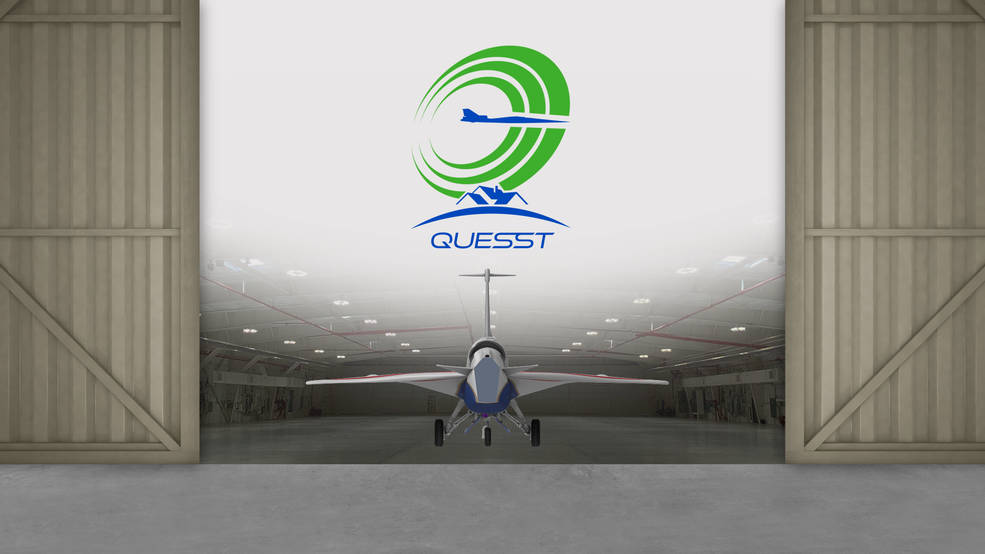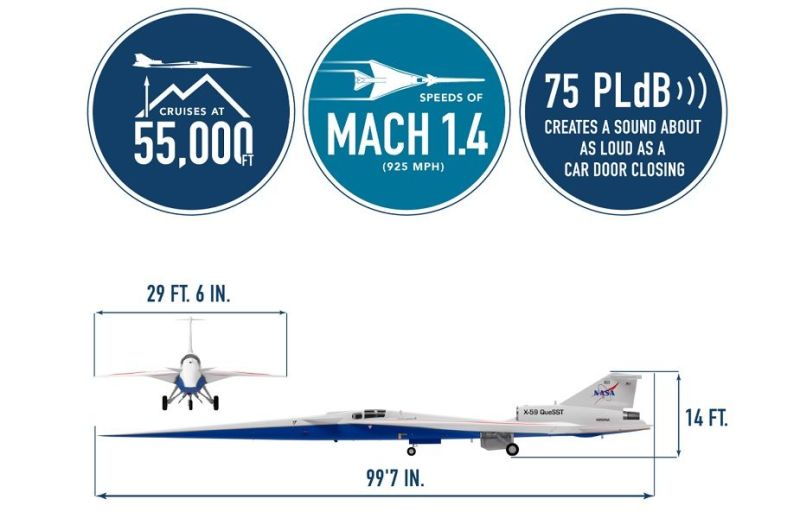


The X-59 Quesst (Quiet SuperSonic Technology) will be used to collect community response data on the acceptability of a quiet sonic boom generated by the unique design of the aircraft.
The data will help NASA provide regulators with the information needed to establish an acceptable commercial supersonic noise standard to lift the ban on commercial supersonic travel over land.
NASA says,
Evoking the experimental nature of flight testing and the spirit of aeronautical exploration, Quesst is what NASA is calling its mission to enable supersonic air travel over land. This new moniker – complete with an extra "s" to represent “supersonic” – draws its inspiration from NASA’s long legacy of supersonic flight research.
If NASA succeeds to collect the vital data during the progress of this project, it may pave the way for a possible comeback of commercial supersonic flights ,after the departure of the Concorde from commercial activities.
To achieve its mission goals, NASA has laid out Quesst in three phases. The first and current phase focuses on the assembly of the X-59, followed by initial flights planned for later this year to prove the safety and performance of the aircraft.
The second phase, expected to take place during 2023, will focus on acoustic validation. During this phase, the mission will prove the X-59 is ready for regular operations in the National Airspace System.
The aircraft will fly over NASA’s Armstrong Flight Research Center in Edwards , California to demonstrate that the supersonic technologies work as designed. The flights will also show that that the tools used to predict and measure the sound level of the sonic thump are ready for use in phase three.

Likely the most anticipated point in the mission, phase three will feature the X-59 flying over several communities across the U.S., gathering data from the public to learn what people think of the X-59’s sound.
This phase three is expected to take place in 2024 through 2026. NASA has yet to select the communities.
The mission is set to wrap up in 2027 by taking the information collected during phase three and sharing it with U.S. and international regulators.
With the information gathered during the Quesst mission, the hope is to enable regulators to consider rules based on how loud an aircraft is, not based on an arbitrary speed.
The Low-Boom X-plane (X-59) will be 94 ft long with a 29.5 ft wingspan for a maximum takeoff weight of 32,300 lb (14,700 kg), propelled by a General Electric F414 engine.

X-59 is expected to cruise at Mach 1.42 (1,510 km/h; 937 mph) at an altitude of 55,000 ft (16,800 m), creating a low 75 Perceived Level decibel (PLdB) thump to evaluate supersonic transport acceptability.
Courtesy : NASA Langley Research Center
Read more...
